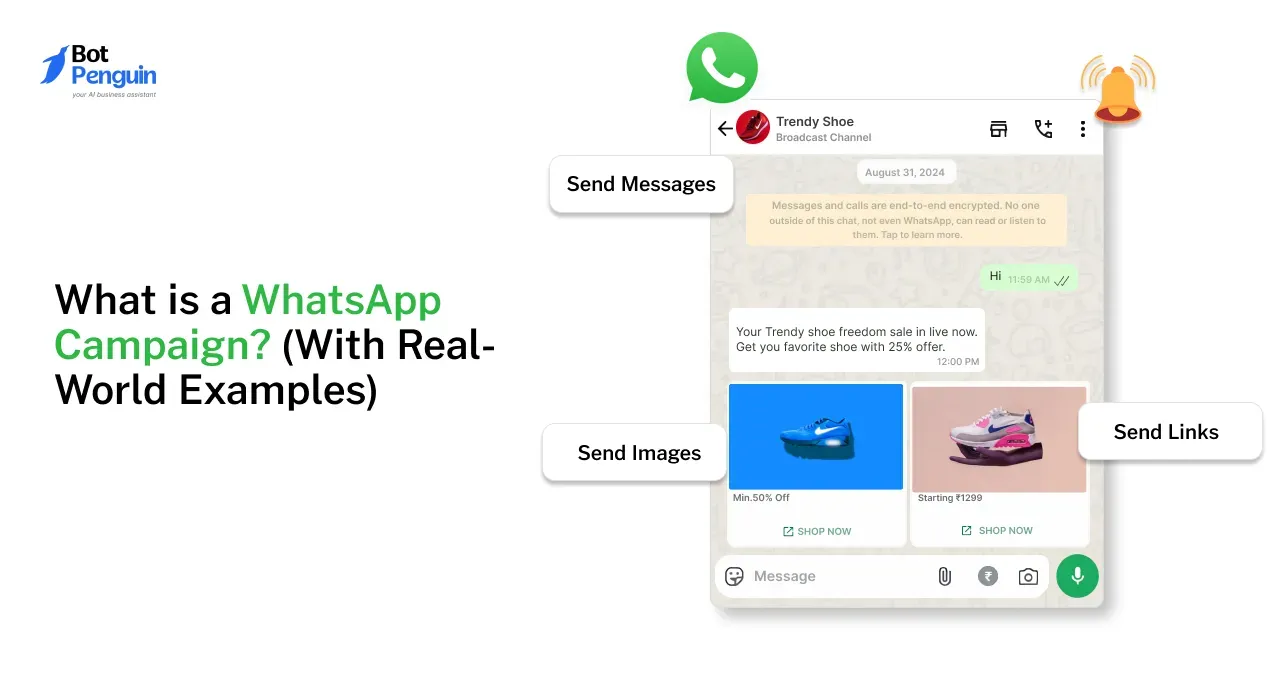Introduction
Imagine a student entering a bustling university campus, feeling overwhelmed by the endless forms, deadlines, and questions that come with starting a new academic journey.
Now, picture this student being guided through the entire process by a friendly, ever-present chatbot for higher education.
From answering admission questions to recommending the best courses, this chatbot for higher education is there every step of the way. This is no longer a far-off vision; it’s a reality in higher education today.
In fact, a recent study found that 70% of higher education institutions are planning to implement AI-driven chatbot for higher education by 2023 to enhance student engagement and streamline administrative processes.
Chatbot in higher education are revolutionizing the way students interact with educational services, providing personalized support and making the entire experience more efficient.
As universities embrace this technology, the future of learning becomes not only smarter but more accessible and responsive to the needs of students. So continue reading to know more about the AI chatbot for higher education.
What are Chatbot in Higher Education?
AI chatbot for higher education are transformative tools designed to streamline communication, enhance student engagement, and provide instant support.
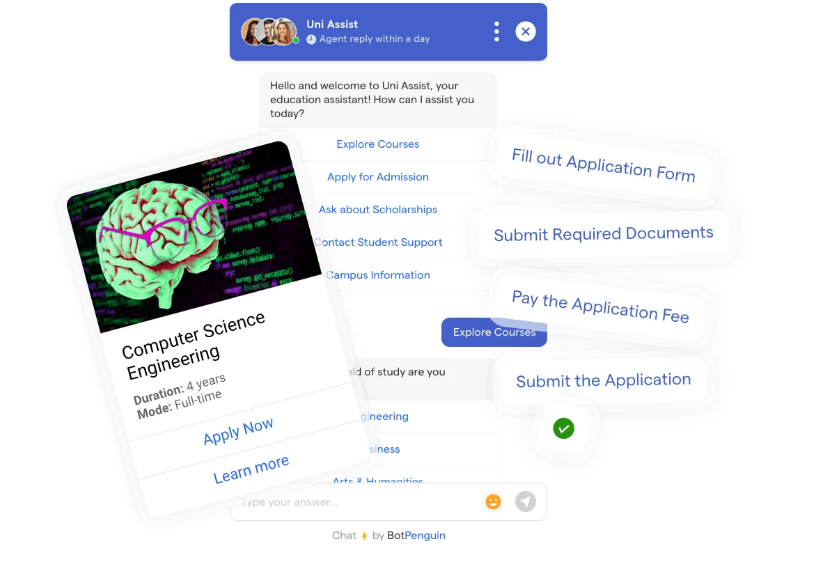
These AI-powered virtual assistants simulate human conversation to assist users in real-time, especially over the Internet.
By leveraging conversational AI, a chatbot for higher education can assist students, faculty, and staff in a variety of tasks, from answering common queries to managing administrative tasks like course registration and scheduling.
A recent study by Juniper Research found that a chatbot for higher education is expected to save over $11 billion globally by 2024, demonstrating how much these tools are revolutionizing the education sector.
Types of Chatbot in Higher Education
When it comes to implementing a chatbot for education, there are two main types to consider: rule-based chatbots and AI chatbot for higher education.
Rule-Based Chatbot for Higher Education
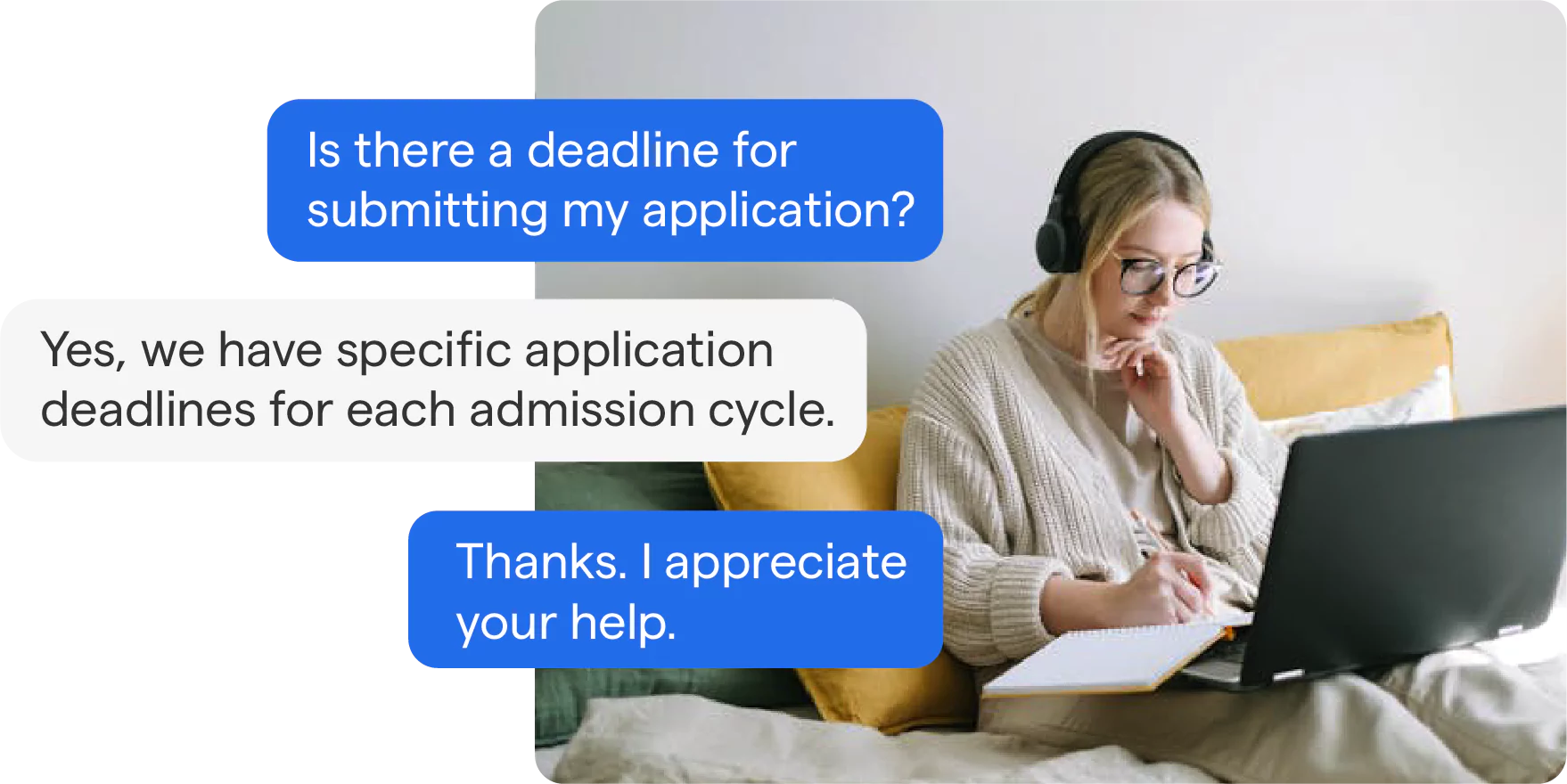
Rule-based chatbots operate based on pre-set rules and simple responses. These are often designed with a fixed set of instructions, using if-then logic to generate answers to user queries.
While rule-based chatbot for higher education are more limited in their interactions compared to AI-powered versions, they are easy to deploy and manage, making them a good option for institutions with more straightforward, routine needs like FAQs or administrative inquiries.
For example, a rule-based chatbot for higher education might help students navigate basic queries such as class timings, exam schedules, and office hours.
However, these chatbots can only handle queries for which they have pre-programmed responses.
AI-Based Chatbot for Higher Education
AI chatbot for higher education, on the other hand, is more advanced. These virtual assistants, like BotPenguin, leverage natural language processing (NLP) and machine learning algorithms to understand and respond to student inquiries in a more personalized and dynamic way.
Unlike rule-based systems, AI chatbot for higher education learn from interactions, allowing them to adapt to different conversational contexts and user preferences over time.
One real-world application of an AI chatbot for higher education is the chatbot used by Georgia State University, which handles thousands of student inquiries each day.
This AI-powered system assists students with tasks like financial aid applications, class registrations, and administrative requests.
By offering a personalized experience, these AI-based solutions can significantly enhance operational efficiency and student satisfaction.
How Chatbot for Higher Education Work?
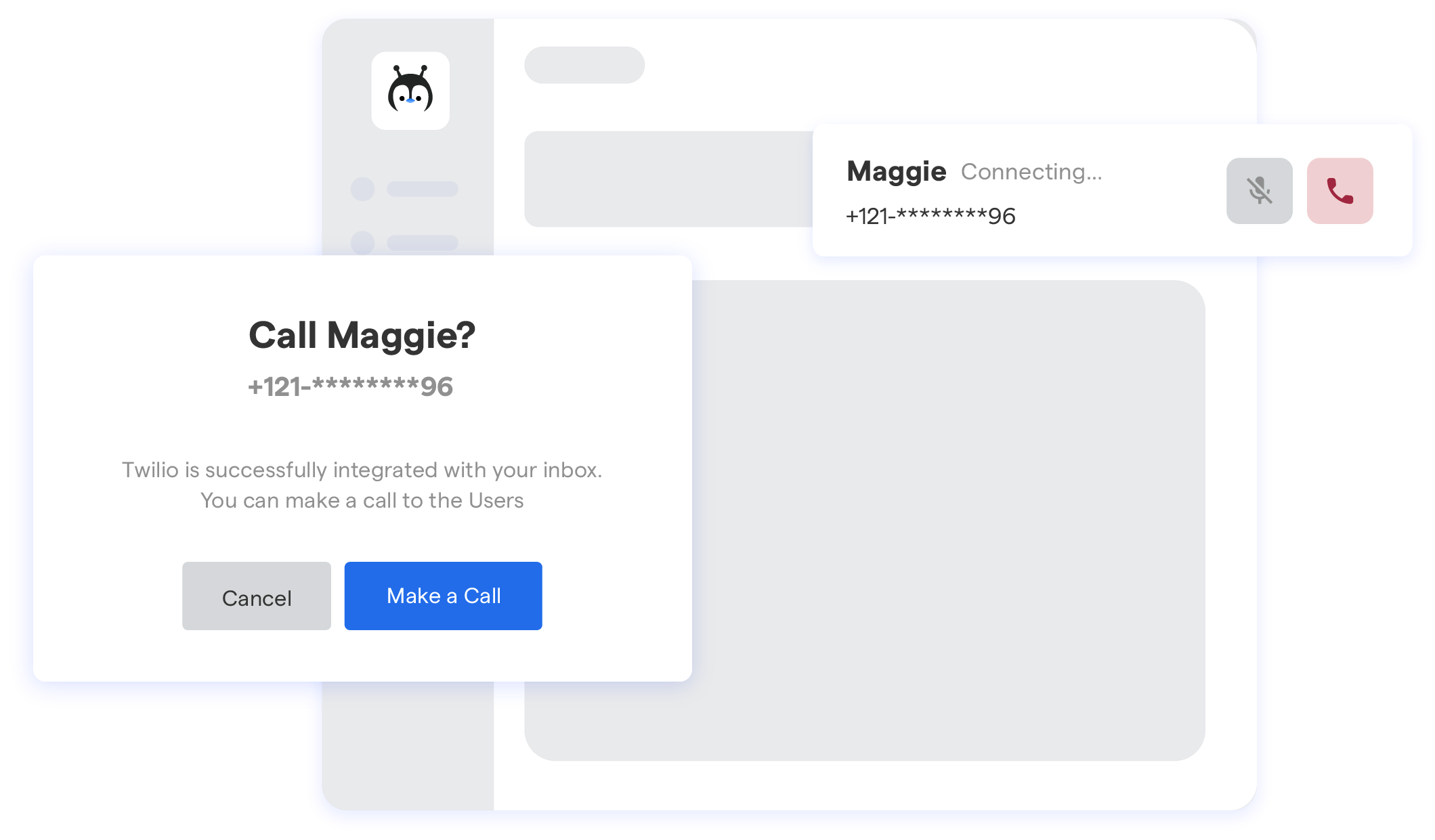
Understanding how chatbots for educational institutions function is key to realizing their full potential in transforming education. Let’s break down the process:
- User Interaction: A student or staff member initiates a conversation by sending a message to the chatbot for higher education, often via a website or messaging platform like Facebook Messenger or WhatsApp.
- Data Processing: The chatbot for higher education uses Natural Language Processing (NLP) algorithms to analyze the message, decipher the intent behind the query, and extract relevant information.
The more advanced AI chatbots for education systems can even understand context and nuances in user language, making them more effective.
- Response Generation: Depending on the nature of the query, the chatbot either generates an immediate response (for simple queries) or triggers an action (like scheduling a meeting or providing a document download).
AI chatbots, like BotPenguin, can produce answers tailored to the individual user's needs, leveraging past interactions for more relevant answers.
- Conversation Flow: Maintaining a continuous and engaging conversation is critical for chatbots in education.
The AI chatbot for higher education guides the user through the interaction, answering follow-up questions, offering suggestions, and ensuring the conversation remains relevant and helpful throughout the process.
Benefits of Chatbot for Higher Education
Chatbots for higher education are reshaping how academic institutions engage with students, staff, and even prospective applicants.
From enhancing student engagement to streamlining administrative tasks, these AI-powered assistants are offering a range of benefits that make them indispensable in modern educational environments.
Improved Student Engagement
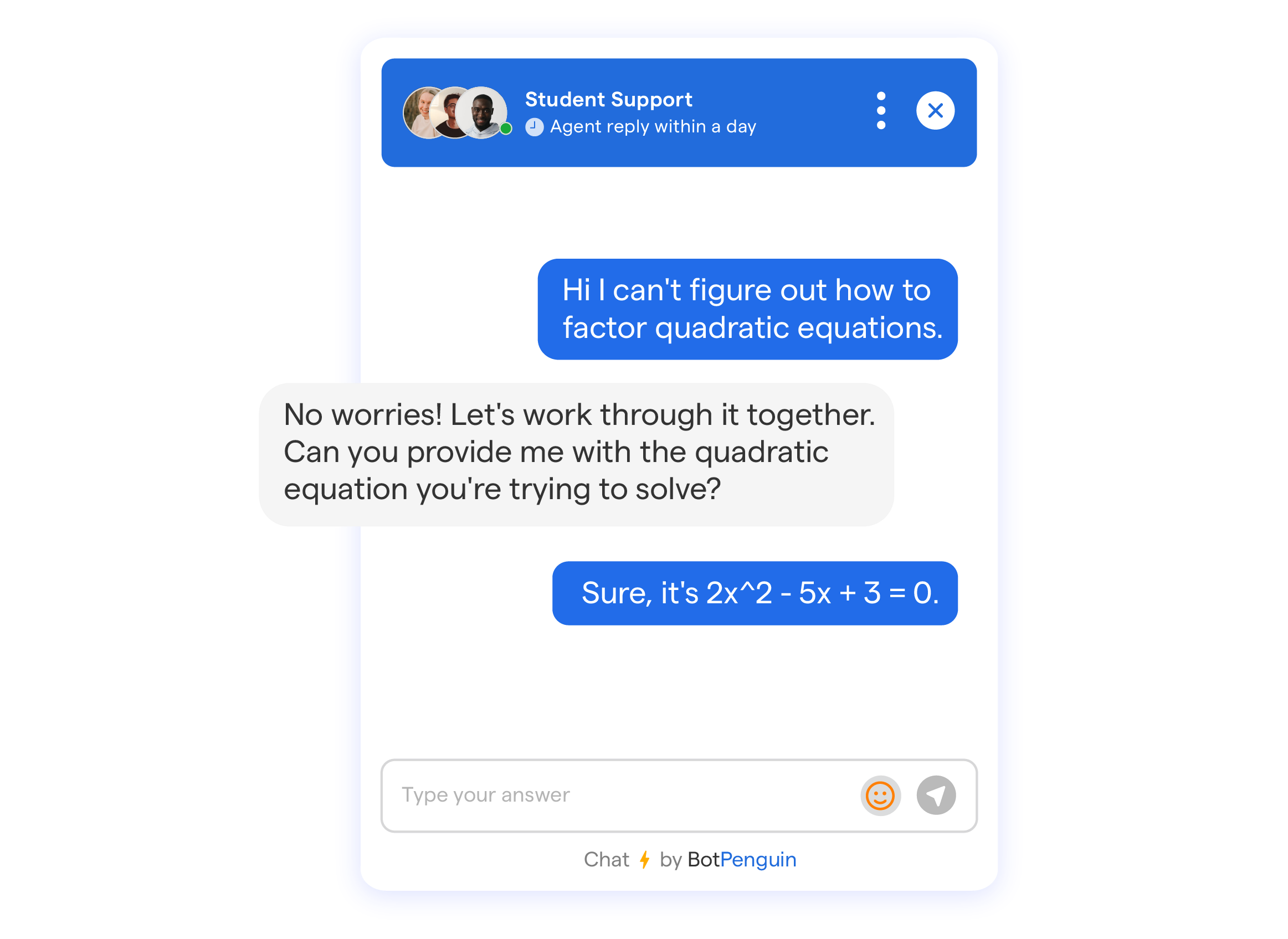
One of the biggest advantages of AI chatbot for higher education is its ability to foster continuous engagement with students.
These chatbots are always on, providing immediate responses to questions, offering advice, and helping students navigate their academic journey.
For example, Bots at the University of Leicester have been implemented to provide students with personalized updates about assignments, deadlines, and campus events. This kind of engagement helps students feel supported and connected, even outside traditional office hours.
24/7 Availability for Student Queries
Unlike traditional office hours, which are limited to specific times of the day, AI chatbot for higher education, like BotPenguin, assist round the clock. This ensures that students get the help they need whenever they need it—whether it’s midnight or a holiday weekend.
A great example is Georgia State University’s chatbot (dubbed "Pounce"), which answers a wide variety of student inquiries 24/7, helping with everything from financial aid to course registration. This instant availability significantly reduces wait times and boosts student satisfaction.
Streamlined Administrative Processes
Educational institutions are busy places, and managing administrative tasks efficiently is crucial.
Chatbots for education can handle a multitude of time-consuming tasks, such as assisting with course registrations, checking the status of applications, managing appointment scheduling, and even providing campus maps.
BotPenguin’s chatbot solutions, for instance, can help automate registration processes, reducing the burden on staff and improving the overall efficiency of administrative operations.
By automating repetitive tasks, chatbots free up human resources for more complex activities, improving institutional productivity.
Personalized Learning Experiences
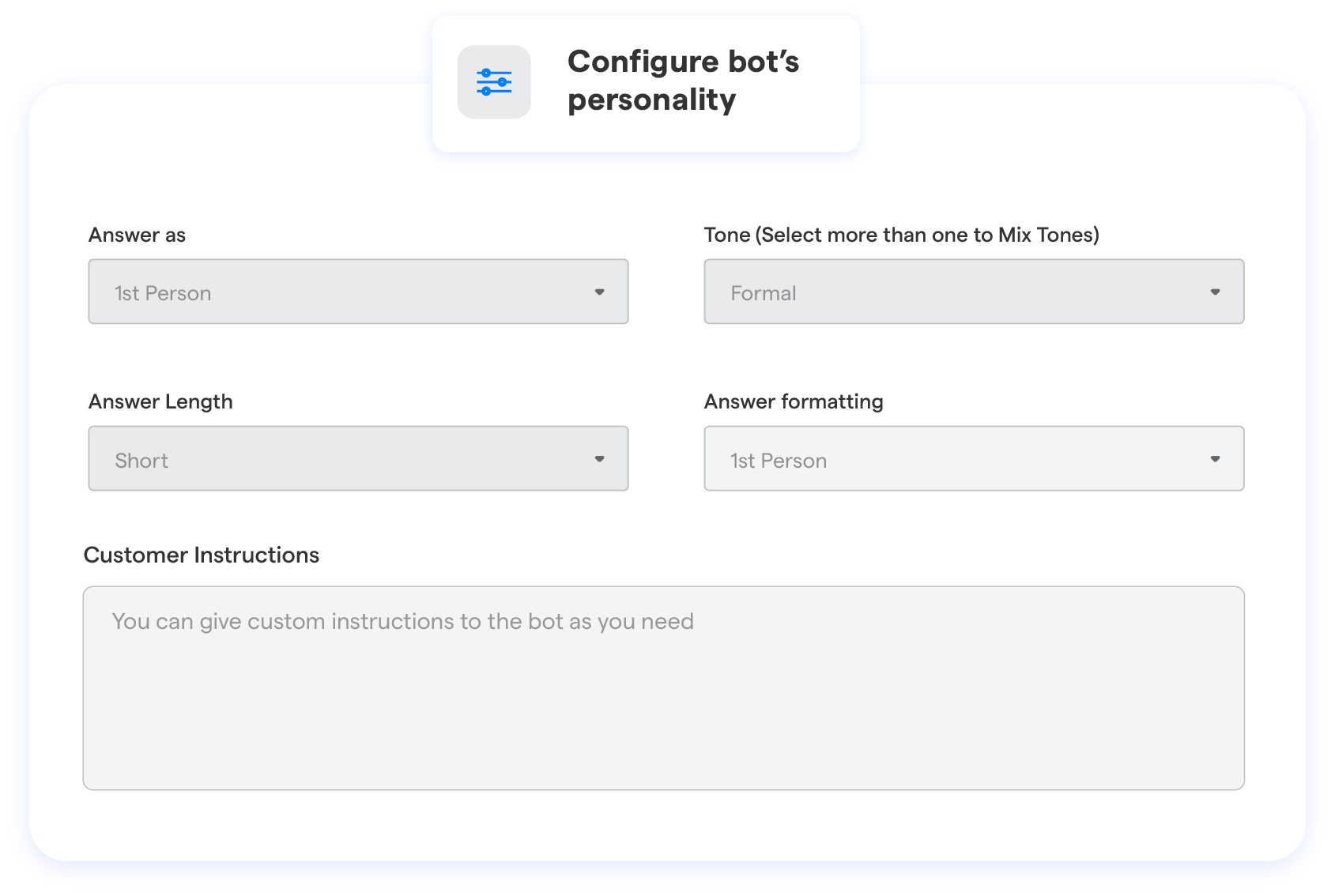
An essential feature of AI chatbots for education is their ability to offer personalized support. By analyzing user interactions, these chatbots can tailor advice, resources, and reminders based on the individual needs and preferences of each student.
For example, Duolingo’s chatbot tailors language lessons according to the student’s proficiency level and progress.
Similarly, a chatbot integrated into a university’s system could guide students toward courses that align with their career goals or recommend relevant campus events. Such personalized learning experiences can significantly enhance student satisfaction and success rates.
Suggested Reading:
Revolutionizing Education with Chatbot Success Stories
Data Collection and Insights
One of the powerful features of AI chatbots for higher education is their ability to collect valuable data about student behavior, frequently asked questions and general engagement.
Institutions can use this data to improve services, address gaps in student support, and track common concerns. For instance, chatbots can identify patterns in student queries related to enrollment, course prerequisites, or financial aid processes.
This data-driven insight allows educational institutions to adjust their services based on actual student needs, making the overall student experience more streamlined and efficient.
Use Cases of Chatbots in Higher Education
Chatbots are revolutionizing higher education by enhancing student services and streamlining operations. Here are some key use cases:
Enrollment and Admissions
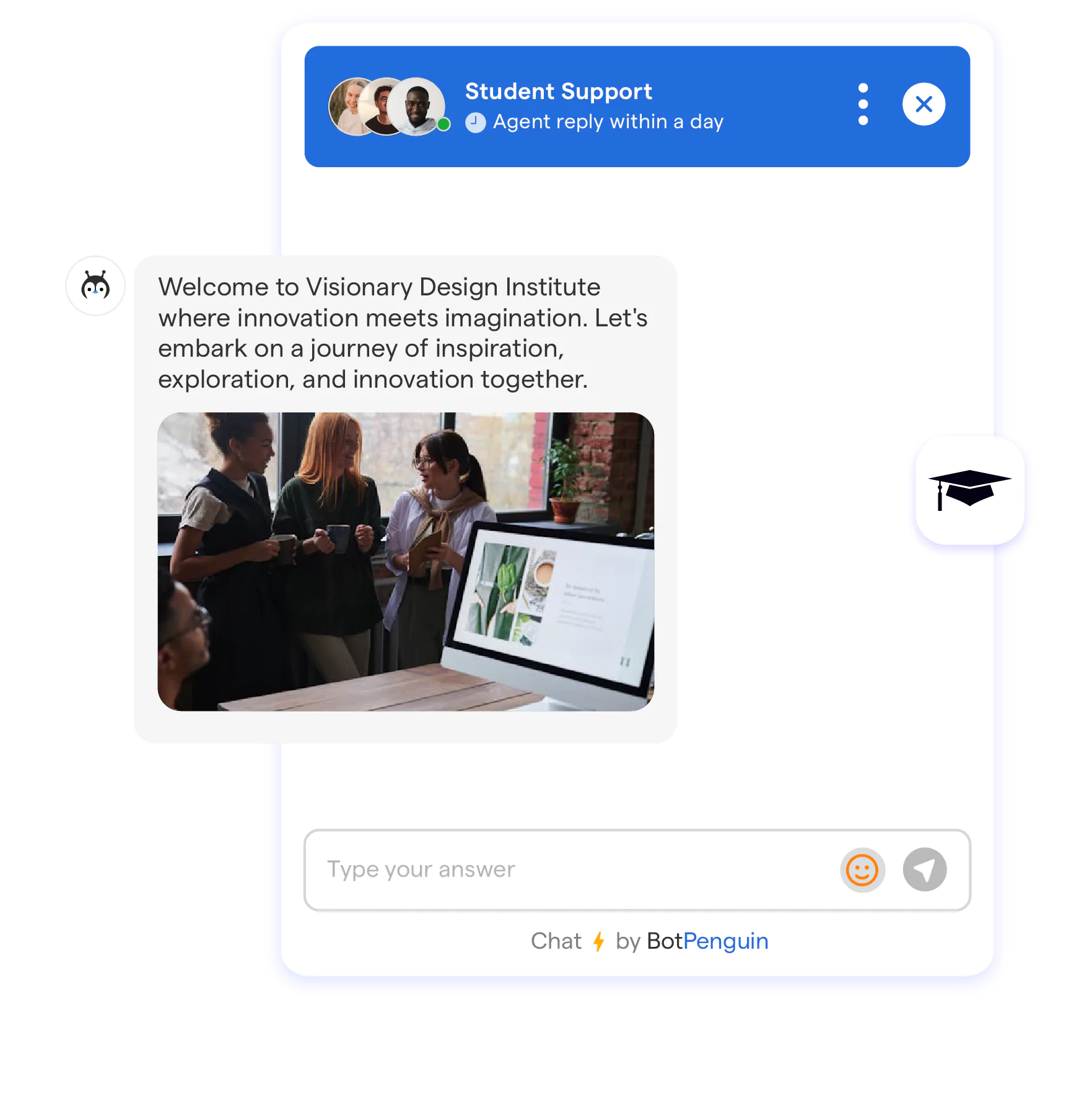
A chatbot for higher education can guide students through the enrollment process, providing instant access to forms, deadlines, and requirements.
This automation reduces staff workload, allowing for more personalized support.
Academic Advising and Counseling
AI chatbots offer tailored course recommendations and career guidance based on students' academic history and goals.
This personalized support helps students make informed decisions and navigate their educational paths effectively.
Student Support Services
Chatbots assist students with scheduling, registration, and accessing resources. This convenience enhances the student experience by providing quick, 24/7 access to essential information.
Library and Research Assistance
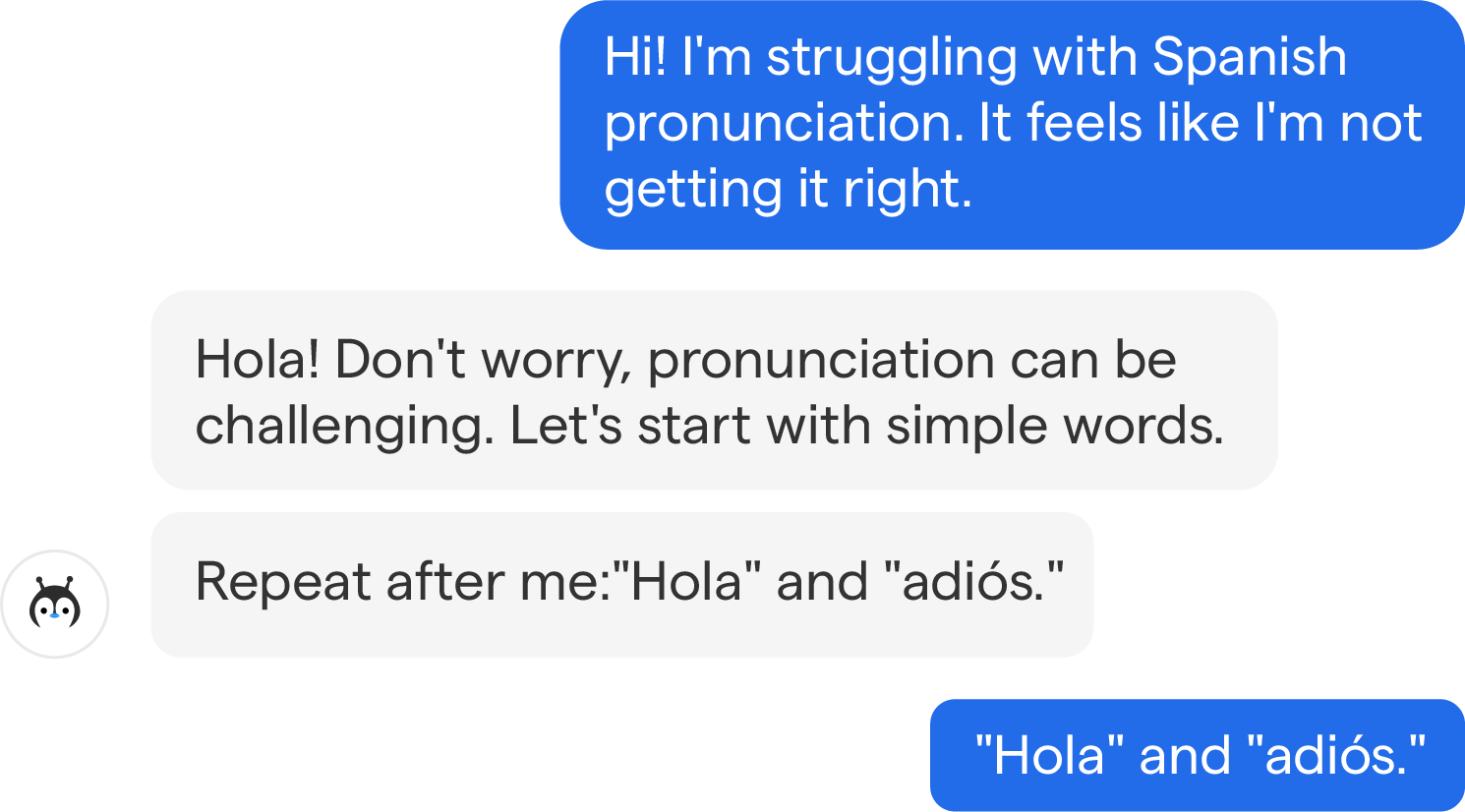
AI chatbot for higher education help students locate research materials, cite sources, and navigate databases.
This service supports academic research by making resources more accessible and offering guidance on proper citation techniques.
Career Services and Job Placements
Chatbots assist with resume building, job search strategies, and interview preparation, helping students transition smoothly into the workforce.
By offering tailored career support, this AI chatbot for higher education improves student success in securing jobs.
Common Challenges and Solutions in Implementing Chatbot For Education
Following are some challenges along with possible solutions in implementing chatbot for higher education :
Integration with Existing Systems
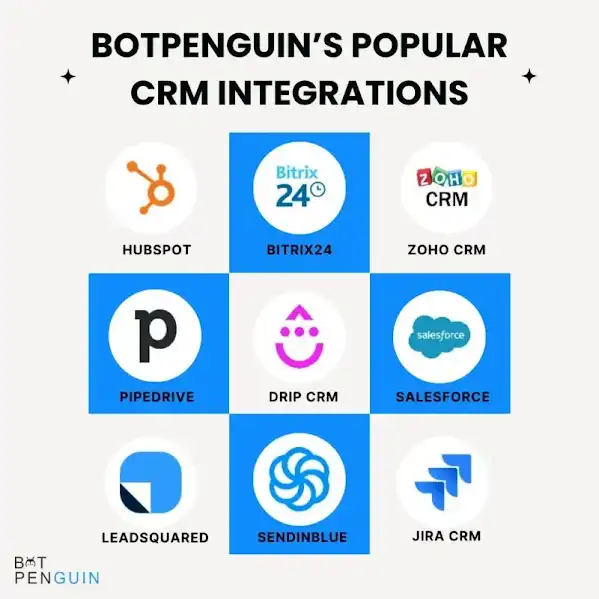
Integrating chatbots with existing systems like CRM and learning management platforms can be complex. There are issues of incompatibility causing hindrance to work.
Solution: Using platforms like BotPenguin, which offer seamless native integrations, can simplify this process and ensure smooth data flow between systems.
Building a Comprehensive Knowledge Base
Creating an accurate, up-to-date knowledge base for the chatbot requires significant effort and collaboration. It may also be prone to outdated information.
Solution: Regular updates and collaboration with faculty and staff ensure that the chatbot's knowledge base remains current and accurate.
Ensuring Accurate Responses
Chatbots must understand diverse queries from students to provide helpful responses. They must be able to understand the context to help students in times of need.
Solution: AI-powered chatbot for higher education with advanced natural language processing capabilities, such as those from BotPenguin, can accurately interpret and respond to student inquiries.
Suggested Reading:
BotPenguin's Free Chatbot for Education: The Ideal Choice
Ensuring Data Privacy and Security
Protecting student data is critical in higher education. Student personal and Institutional data can be very sensitive and it must be handled appropriately.
Solution: Implementing strong encryption and conducting regular security audits ensures data privacy and compliance with regulations like GDPR or FERPA.
Addressing Resistance to New Technology
Some students and staff may resist adopting new technology. This may prevent them from harnessing the latest resources available and put them behind in the competition form their peers.
Solution: Providing training and gathering user feedback can help ease the transition, ensuring that the chatbot for higher education becomes a valuable tool for everyone.
Future of Chatbots in Higher Education

The future of chatbots in higher education is bright, with the global chatbot for higher education market expected to reach $1.25 billion by 2025, growing at a CAGR of 24.3%. By 2023, 70% of institutions planned to adopt AI-driven chatbot for higher education.
Such AI chatbot for higher education will increasingly automate administrative tasks, provide personalized learning experiences, and enhance student support.
They will address student queries instantly, reducing staff workload, while AI-powered bots offer tailored guidance. As technology advances, chatbots will become more intuitive, further integrating into the educational system and improving both efficiency and the student experience.
Conclusion
In conclusion, integrating chatbots in higher education is a game-changer, offering significant improvements in student engagement, administrative efficiency, and personalized support.
AI chatbot for higher education enhance the accessibility of information, providing instant responses and real-time assistance, which allows students to have a more interactive and seamless learning experience.
This ultimate guide to AI chatbot for higher education in higher education has highlighted the immense benefits and diverse applications of this transformative technology.
As educational institutions continue to embrace digital advancements, AI chatbots, like BotPenguin, play a crucial role in reshaping how students and staff interact with academic resources and services.
By implementing AI chatbot for higher education technology, institutions can not only streamline operations but also create a more connected, responsive, and efficient educational environment.
With the ability to revolutionize the higher education landscape, AI chatbot for higher education are an invaluable asset, ensuring a future where learning and student support are enhanced through smart, AI-driven solutions.
Frequently Asked Questions(FAQs)
What is a chatbot for higher education?
A chatbot for higher education is an AI-powered tool designed to assist students and staff by answering questions, providing information, and handling administrative tasks.
How do AI chatbot for higher education benefit higher education institutions?
AI chatbot for higher education enhance efficiency, offer 24/7 support, personalize learning, and streamline administrative processes, benefiting both students and staff.
Can chatbot for higher education improve student engagement?
Yes, chatbots improve student engagement by providing interactive, real-time support, and offering resources that keep students engaged and involved.
What are common uses of chatbot for higher education?
Common uses include admissions support, academic advising, student services, library assistance, and career guidance.

